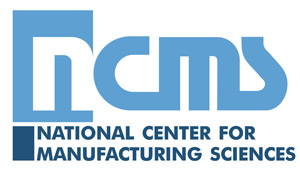Joint Field Service Evaluation Plan (Common Vendor)
NCMS Project #: 140809
Problem: Many OEMs manufacture a wide variety of products for different market segments. These components or products may have separate part numbers and be managed by different departments or organizations. Product management “silos” rarely share manufacturing data so it is highly likely that common parts or derivatives of common parts will be used in different products without recognition of that fact.
The dominant failure modes (e.g., leaks, wear, corrosion, etc.) dictate the failure and removal rate of the components and are typically common across multiple systems. For example, a primary reason for removal of a hydraulic pump on an AH-64 Apache is leaking/loss of pressure and a similar pump on the F-18 and/or AV-8B performs the same basic function and experiences very similar failure modes, logistical and readiness problems. While the pump is not interchangeable, it is usually designed by the same OEM and manufactured by the same vendor. The size and shape are different but sealing interface would be very similar (if not identical).
Benefit: Initiating a DoD common vendor identification and improvement program will enable the global logistics community to reduce the logistics footprint, reduce demand, reduce cost, increase component reliability, enhance sustainment and improve aircraft readiness. A process for the identification and assessment of common vendor items would apply to not only DoD but to commercial industry as well. The model would potentially be applicable in the commercial aviation, ground vehicle, and other industries impacting safety and reliability improvements and reducing operating costs of transportation.
Solution/Approach: The purpose of this initiative is to jointly develop and demonstrate a process for the identification, assessment and business case development for OEM and common vendor component improvements using the Army and Navy as testbeds. It will focus on key vendors and their components that are used across multiple military systems (such as bearings, fluid pumps, valves, gears, etc.).
Once a failure mode is reduced in one application, the reliability improvements can be directly transferable to the multiple product lines. This holds true whether the component is installed in a helicopter from the Army, a jet from the Navy, an automobile from Detroit, or on a manufacturing line in the Midwest.
Impact on Warfighter:
- Increased time on wing
- Increased readiness
- Reduce O&S cost
DOD Participation:
- U.S. Army Missile Research, Development and Engineering Center (AMRDEC)
Industry Participation:
- The Boeing Company
- NCMS
Benefit Area(s):
- Repair turn-around time
- Positive environmental impact
- Safety
- Improved readiness
Focus Area:
- Business processes/partnerships
